Do you want to create a bee-friendly garden and help the endangered wild bees in particular? Then you've come to the right place!
Bienen sind unglaublich faszinierende Insekten. Sie können in der Erde nisten, Tänze aufführen, UV-Strahlen wahrnehmen und sind nicht zuletzt die wichtigsten Pflanzenbestäuber auf unserem Planeten.
But above all, comfortable gravel gardens, the monocultures and pesticides from industrial agriculture, the Air Pollution und der Klimawandel lassen ihre potentiellen Lebensräume schrumpfen. Glücklicherweise hast du im eigenen Naturgarten die volle Kontrolle und kannst der Bienenwelt einen großen Gefallen tun!
In this article, I will therefore give you my best tips for bee-friendly gardening. Use them to create a safe oasis for honey bees and, above all, wild bees in a short space of time. Let's go!
Reasons: Why create a bee-friendly garden?
Before we move on to the specific tips, I have one more healthy dose of motivation for you. There are so many good reasons to create a bee garden. Where is the best place to start? Let's see.
Both honey bees and wild bees contribute to the Pollination of wild and crop plants significantly to the preservation of the biodiversity and the stability of ecosystems. Promoting them therefore also means Protect the environment and our Food Security to ensure that
As the honey bee is not endangered, however, we must Protect wild bees in particular. Of the almost 600 species of wild bees native to Germany, 128 are already classified as endangered according to the Red List. Threatened with extinction or endangered - and 42 species are already on the early warning list.1
Some people even want to get rid of or drive away the bees in their garden because they are afraid of being stung. However, if you attract wild bees, you don't have to worry: they also have a stinger, but never actually sting. At most when they are crushed.
Apart from this, another argument in favor of a bee-friendly garden is that such natural garden areas are extremely attractive to bees. colorful, lively and as a rule also low-maintenance are.
Added to this is the Role model functionwhich you also fulfill towards your children - with whom you Humming and buzzing and many other beautiful Sounds of nature in the garden together.
10 tips: How do you design a bee-friendly garden?
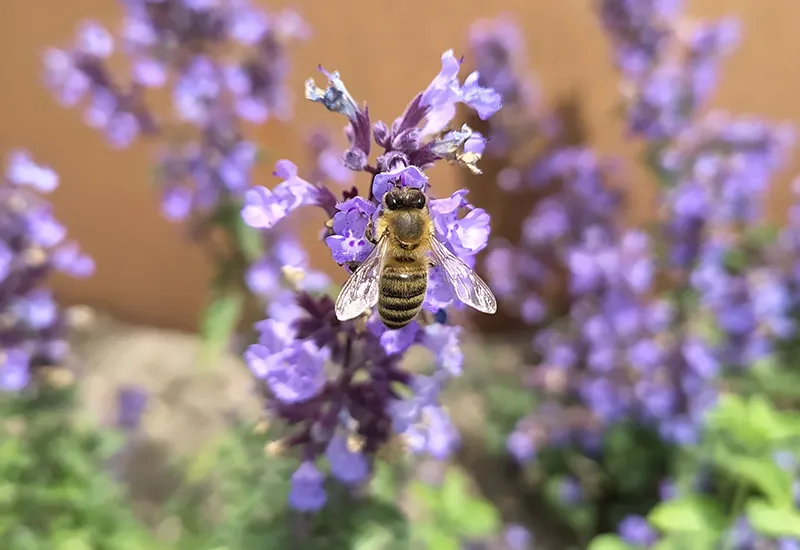
There should no longer be any lack of motivation, so that we can now go to the concrete measures in their own greenery.
I have that luck myself, owning your own garden for some time now. Like the wildflowers, I am completely absorbed in it.
With the following tips for a bee-friendly garden, I am also talking about from personal experience. Use them to promote, colonize and keep wild bees.
1. inform about the needs of the bee world
First of all, it is important to understand, what the wild bee needs and does all day long. This knowledge then helps to optimize the garden for them.
Here are a few important factsthat you should know:
- Wild bees are solitary bees, do not produce honey and do not live in colonies.
- Wild bees pollinate up to 5,000 flowers a day.2
- 75 percent of local wild bee species nest in the ground.3
- Wild bees have a relatively small flight radius.
- Some wild bees sleep in the blossoms of certain flowers.
- All "wild bee plants" are suitable for honey bees - but the reverse is not always true.
2. select native, bee-friendly plants
So that wild bees in your Natural garden feel at home, you also need to offer them plants that at home in their region by nature and provide insects with pollen, nectar and, ideally, a nesting site.
When making your selection, please also be aware that the Bee-friendly" label does not automatically mean that a plant is actually bee-friendly. In many cases, only honey bees, but not wild bees, touch the plant's flowers.
So I always check in the App from naturaDB, How many wild bee species and other insects are actually attracted to the favored plant. I can also filter specifically for bee-friendly plants and create individual wish lists.
Here are a few Recommended examples for wild plants that wild bees adore and that you can find almost all of them in well-stocked plant shops or online at the Horstmann nursery* get:
Trees for wild bees
- Bird cherry or sweet cherry (Prunus avium)
- Plum (Prunus domestica)
- Whitebeam (Sorbus aria)
Shrubs for wild bees
- One-stemmed hawthorn (Crataegus monogyna)
- Blackthorn (Prunus spinosa)
- Raspberry (Rubus idaeus)
- Yellow bladder bush (Colutea arborescens)
Perennials and flowers for wild bees
- Meadow knapweed (Centaurea jacea)
- Tansy (Tanacetum vulgare)
- Meadow bellflower (Campanula patula)
- Mountain aster (Aster amellus)
Tip: Wildflower mixtures in particular help the bees immensely! For example, I can give you this bee welfare seed* from "Die Stadtgärtner" recommend!
3. stagger flowering times throughout the year
To ensure that bees can always find food in the garden, flowers should be available in every season if possible. So make a conscious decision here and there for Perennial bloomer (such as the common meadow yarrow or the common horned clover) - and take the desired, permanent flowering splendor into account when planning your garden.
This is a really quite Important tipto make your garden bee-friendly!
4. create a bee pasture
A bee pasture is basically a flowering plant that is a source of food for bees or also a Wildflower meadow with a particularly large number of bee-friendly plants.
By placing them, the wild bees will find food almost all year round and can even use some dry plant stems (e.g. from the field thistle) as Nesting site use
You also benefit yourself, because a bee pasture like this requires no maintenance and looks beautiful. All you need for the plant is a few regional wildflower seedswhich you sow in a bed or on a slightly loosened lawn. The bigger, the better.
This Flower magic mixtures from ReNatura I can recommend them for the respective region in Germany:
5. set up safe water points

Bees need water in order to drink and cool down. Honey bees also use it to regulate the temperature in their hive and wild bees need it to build their nesting sites, for example.
Especially in dry periods of the year, you can therefore help the yellow-black insects a lot by using a simple Building a beehivefill them with water and place them in a sunny spot.
A clay bowl like this*water and some moss, as well as a few stones and branches to land safely - that's all you need.
6. planting a wild shrub hedge
I also have quite a large one in my garden Wild hedge of native shrubs which together provide both a screen and are important for bees - as well as birds - as a source of food and shelter. The hedge is quite low-maintenance, a true splendor of flowers and a Mecca of the Biodiversity. 🙂
In addition to the hawthorn and blackthorn already mentioned, there are also some other bee-friendly shrubswhich reach a certain height and which I have in my wild hedge:
- Wine rose (Rosa rubiginosa)
- Ear willow (Salix aurita)
- Common rock pear (Amelanchier ovalis)
- Dog rose (Rosa canina)
Speaking of birds! Also for the Bird friendly garden I have put together a separate article for you. So feel free to pick up a few valuable tips and ideas there too.
7. create shelter and nesting opportunities
Wild bees need and love Deadwood trunks, Cairn or free sand patches like a Sandarium. Also a Compost heap and building materials such as small stones, clay, sand or bark mulch help them along.
Also a Bee hotel can help. However, it is better to build it yourself and avoid the unfortunately often incorrectly assembled (drilled into the end or tubes that are too short) offers from DIY stores and garden centers. For your DIY project, for example, work with these bamboo tubes* and such a perforated log*.
By giving bees and other insects such Near-natural structures in the garden - preferably close to flowering plants - you provide them with ideal living conditions.
8. avoid pesticides and chemical fertilizers
Of course, chemical fertilizers and pesticides (such as insecticides) have no place in an ecological, bee-friendly garden, as they kill bees and destroy their food sources.
If you want to help the bees in your garden, use natural fertilizers instead, such as Compost and plant manure, as well as the natural pest controlby encouraging predators of so-called "pests".
9. reduce light sources in the garden
Like many other insects, bees orient themselves by the light of celestial bodies. But the general Light Pollution is a massive problem, because artificial light sources irritate the busy little animals.
That's why your bee garden is best without them or at least with the most minimalist exterior lighting possible out. For example, it is helpful to only install light sources that shine downwards onto the floor.
10. allow wild corners and mow the lawn less often
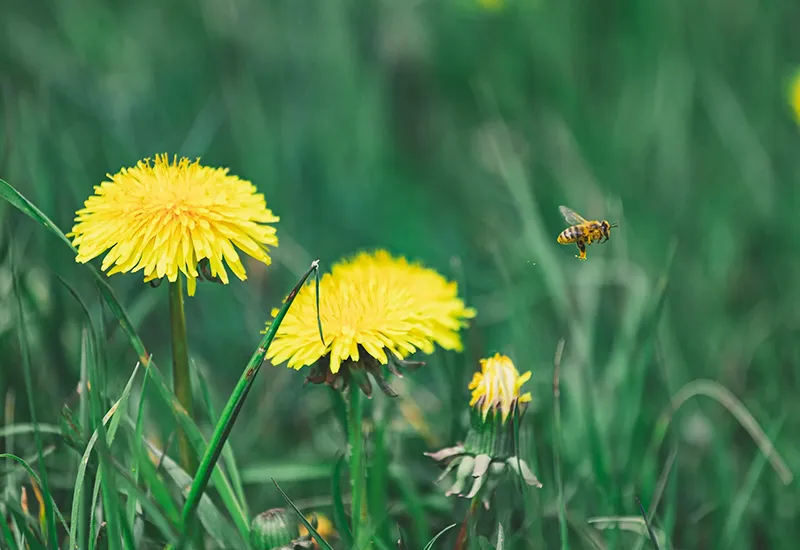
As I said, bees need Structures and native plants! And you give them that too by leaving a few stones here and there and letting the grass grow.
You'll be surprised how many flowering plants, auf deinem Gartenrasen gedeihen und blühen, wenn du einfach mal Hände und Füße stillhältst. 🙂
Dandelion, clover, daisy, ground elder, chickweed or the Buttercup for example. This is why the so-called Mow-free May (or the "No Mo May") more and more popular. Maybe this is a good time for you to give it a try.
Bee-friendly garden, made easy!
I hope that with this article I have achieved something Ignite "bee euphoria" in you and that these tips will help you transform your garden into a flower-filled paradise.
From the bee pasture to the wild shrub hedge to the mowed lawn, you now have the Tools at hand – und musst nur noch loslegen. Schon bald kannst du dann das Summen und Brummen aus der Hängematte genießen. 🙂
"If the bee disappeared off the surface of the globe, then man would have only four years of life left. No more bees, no more pollination, no more plants, no more animals, no more man."
Albert Einstein (more under Garden Quotes)
Do you have any questions, suggestions or further tips for real bee protection in the garden? Then I look forward to your comment!
Stay close to nature,

PS: Be sure to check out my articles about Bee-friendly ground cover, Bee-friendly berry bushes and Bee-friendly wild roses on. And use the recommended plants to make an even more noticeable difference for wild bees.
References:
- Bund für Umwelt und Naturschutz Deutschland e.V. (BUND): Wild bees are exposed to many threats - and depend on protection, available at https://www.bund.net/themen/tiere-pflanzen/wildbienen/bedrohung-schutz. [17.07.2024]. ↩︎
- J. Schütz: Wild bees pollinate better (as of 22.02.2010), available at https://www.badische-zeitung.de/wildbiene-bestaeubt-besser–27295761.html. [17.07.2024]. ↩︎
- Bund für Umwelt und Naturschutz Deutschland, Landesverband Baden-Württemberg e.V.: Gartentipp - Ein Sandarium für Wildbienen anlegen (01.03.2022), available at https://www.bund-bawue.de/service/meldungen/detail/news/gartentipp-ein-sandarium-fuer-wildbienen-anlegen. [17.07.2024]. ↩︎

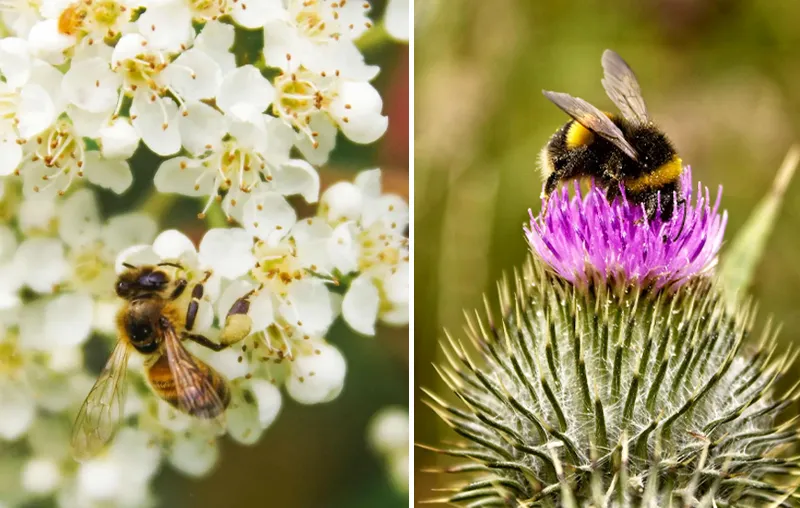

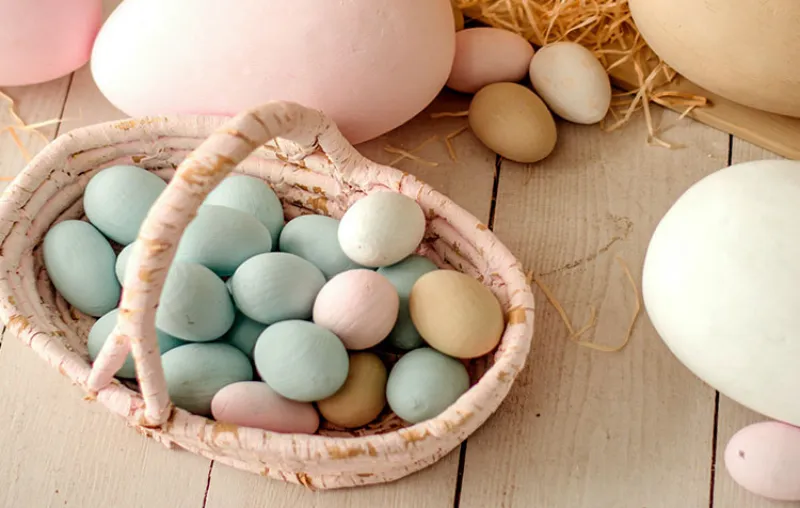
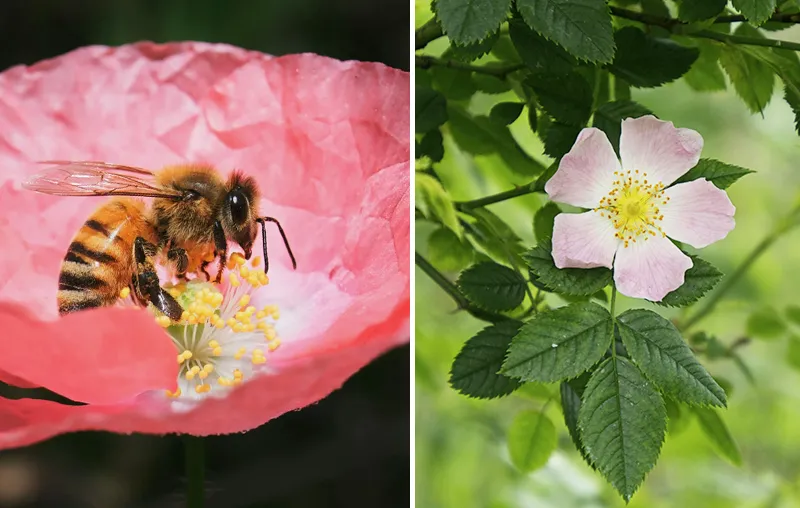
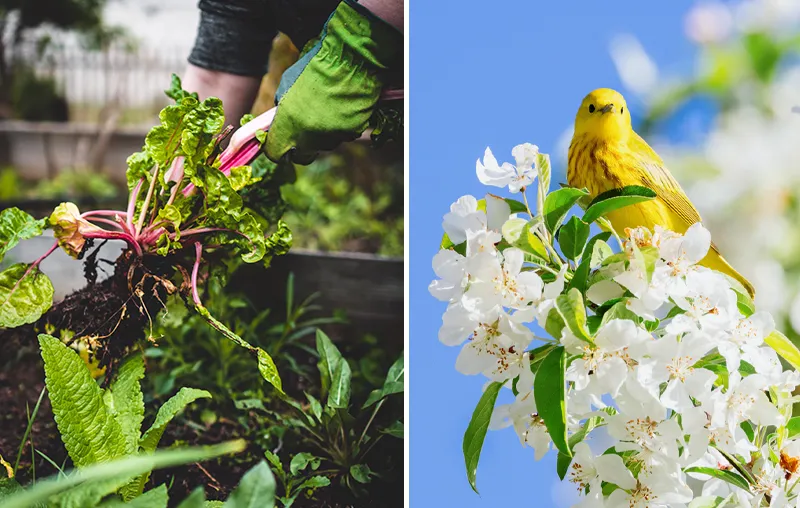
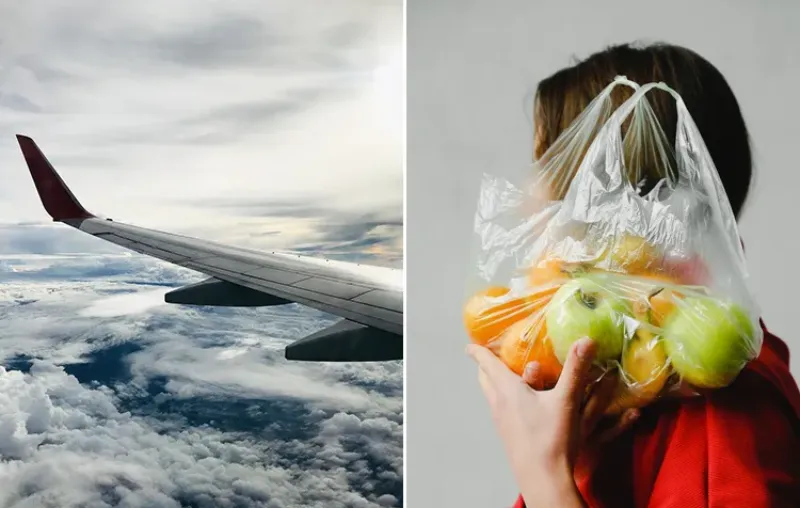
Thanks for the post on bee friendly garden design. My cousin lives on the outskirts of town and would like to plan her garden online so that bees feel comfortable there. Good to know that 3000 crops in this country depend on pollination by bees.
Hello Christoph! Thanks for the great, easy to read post! Our front garden is at the moment raw area after we had to lay a Tranige at the house! In the process, a lot of sand has spread on the "lawn" (was already pretty neglected anyway)! Now I thought for a new lawn, whether English lawn or bee meadow, I have to remove the top layer! You mean but sandy soil is ideal! Do you think I can then really just throw out bee meadow seeds and leave it like that? In addition, I would as just read with you then plant beautiful shrubs and perennials! Thank you and best regards, Claudia
Hi Claudia! Super Idee – also bitte frage da noch einmal beim Baumarkt-Profi nach, ich will dir hier nichts falsches empfehlen. 🙂 Kannst gerne hier kommentieren und sagen, wie du es schlussendlich gemacht hast.
LG Christoph
Hello Christoph,
who has no garden, can be active on the balcony. Soon starts a so-called online congress on this, brought to life by a Berliner. Every day, 3 interviews with experts are unlocked for 24h free of charge. http://bio-balkon-kongress.com/ The focus here is on the edible, but as we all know, before the food comes the bloom and that benefits the insects!
In the city it is really cruel, green areas are mowed so often that nothing can come up at all, and thus there are fewer and fewer food sources. And privately, rock gardens rule. Time to change that!
Hi Tanja, eine richtig coole Idee und auch so simpel 🙂
I like to share. Many greetings, Christoph
Hi Christoph, thanks for the informative article! It is really important that the gardens bees, other insects, butterflies and birds provide habitat and food! Because in the meantime, the food supply is becoming less and less due to sealed areas and chemicals on the fields... With the gardens we can set a counterpoint to this! That's why I have also created the link party natural garden design. There it is exactly about these topics! Maybe you feel like linking your post on Friday? So we could make all the more people aware of it.
Kind regards,
Amely
Hi Amely! Danke für deinen lieben Kommentar, ich sehe das genau wie du 🙂
I'd love to, I'll be in touch.
Many greetings,
Christoph
Comments are closed.